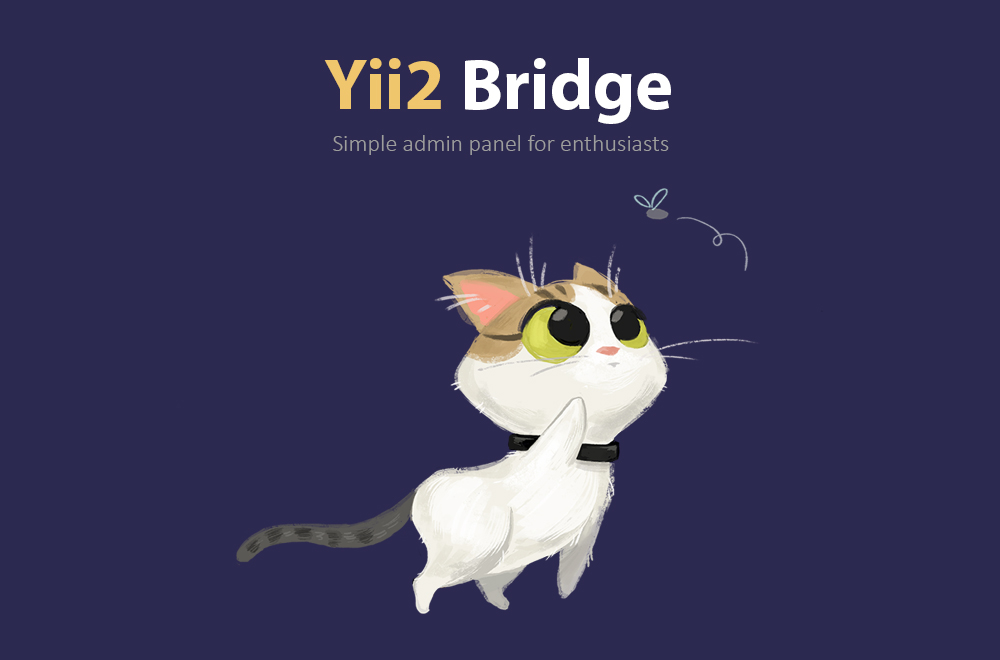Bridge delivers you simple content management system that utilizes best production-tested components and plugins for Yii2.
Add it as Composer dependency by running
$ composer require naffiq/yii2-bridgeAdd module declaration to your config file for web config:
<?php
return [
// ... your config
'modules' => [
'admin' => [
'class' => '\naffiq\bridge\BridgeModule',
// Add your projects modules here to keep right routing.
'modules' => [
'customModule' => ['class' => '\app\modules\your\CustomModule']
],
// Add menu item of your content management module to menu
'menu' => [
[
'title' => 'Content',
'url' => ['/admin/content/default/index'],
'active' => ['module' => 'content'],
'icon' => 'list'
]
],
// Alternatively you can define different menu items for different
// roles. In that case it will override default menu items, such as
// settings, users and dashboard
'composeMenu' => function ($user, $roles, $authManager) {
/**
* @var \yii\web\User $user
* @var \Da\User\Model\Role[] $roles
* @var \Da\User\Component\AuthDbManagerComponent $authManager
*/
if (isset($roles['admin'])) {
return require __DIR__ . '/menu-admin.php';
}
if ($user->can('editor')) {
return require __DIR__ . '/menu-editor.php';
}
if (in_array($user->id, $authManager->getUserIdsByRole('manager'))) {
return require __DIR__ . '/menu-manager.php';
}
// Or any other available method
return __DIR__ . '/menu-default.php';
}
]
],
'bootstrap' => [
'admin' // add module id to bootstrap for proper aliases and url routes binding
]
];And for console config, in order to run migrations:
<?php
return [
// ... your config
'modules' => [
'admin' => ['class' => '\naffiq\bridge\BridgeModule']
],
'bootstrap' => [
'admin' // add module id to bootstrap for proper aliases and url routes binding
]
]; After installing and config setup (including database), you should have installation executable in your vendor folder. You can run all the migrations required with single command:
$ ./vendor/bin/bridge-installWarning! This command is running with
--interactive=0flag, which means it will not ask confirmation for it.
After running every step above you should have your admin panel running on /admin route.
The only thing left is to run command to create users.
Run following command to generate users:
$ php yii user/create EMAIL USERNAME PASSWORD ROLE So the correct command to create user with admin role for admin panel would be:
$ php yii user/create [email protected] admin PASSWORD adminGii that is provided with bridge is packed with some improvements to basic gii.
When generating model with db fields ending by image or file, it would
automatically add corresponding upload behavior.
You can turn this behaviors off by clicking on checkbox in generator interface.
And also it has Bridge CRUD generator, which will generate necessary fields
inputs and display it nicely to the index table.
Configure your .env (refer to .env.example). Run migrations with:
$ ./bin/bridge-install-devBridge comes with console app for development and testing purposes, located in bin folder.
You can simply execute it with
$ php bin/yii.php CONTROLLER/ACTION [params]Test package with
$ ./vendor/bin/phpunit